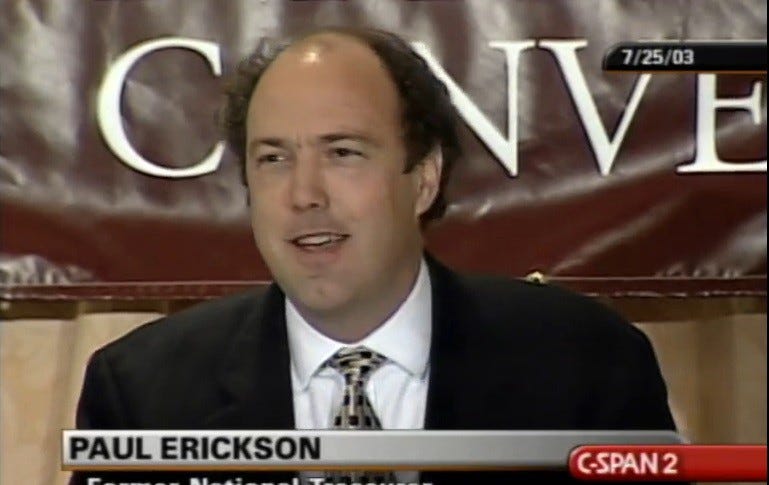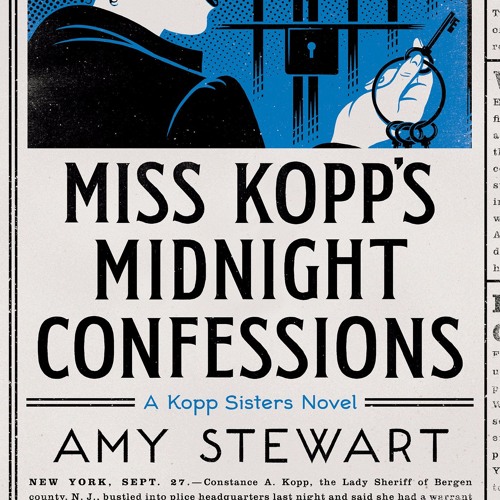Back in February, almost no one had heard of Mariia Butina, or certainly weren't admitting that they did. But then a couple of weeks ago, she was indicted and arrested for being a Russian agent, and ever since we are in the fire hose of information about her. Here's a beginning cast list:
(1) Mariia Butina, who introduced herself to America as a pro-Russian Christian gun-rights activist, and managed to get into every NRA convention in her years among us (2012-2017), as well as the National Prayer Breakfast (a private, closed event in case you didn't know) in Washington D.C. in 2017. Apparently she had a very compelling story... and offered sex for political access and "in exchange for a job at an unidentified “special interest organization.” New York
(2) US Person Number 1 (from the original indictment), a/k/a Paul Erickson - more about him in a minute, but here they are strategizing away:
 |
Maria Butina and Paul Erickson, posted to FB 2013.11.01
|
(4) Butina's handler, Alexander Torshin, Russian politician and Deputy Governor of the Central Bank of Russia. He's also been identified by U.S. intelligence sources as having "established ties" to Russian security forces and a fierce Putin supporter, and by Spanish intelligence (they want to arrest him) as the money launderer for the Russian criminal Tambovskaya Gang. He and Butina founded the Russian-based Right to Bear Arms, and there was a regular correspondence between them that has to be read to be believed. Social media never had it so good.
(5) Her funder, Konstantin Nikolaev, a Russian oligarch worth $1.5 billion by Forbes’s latest estimate. Read USA Today on that: Russian Billionaire Paid Mariia Butina. There's a South Dakota connection to Nikolaev, which I'll get to in a minute.
(6) Her NRA friends: All photos courtesy of Cory Heidelberger at his blog post: (HERE)
 |
Former NRA president David Keene introduces Maria Butina and Alexsandr Torshin to Wisconsin Governor Scott Walker, April 2015. [Source: Walker’s “Our American Revival” PAC photo album]
|
 |
David Keene, former NRA President, and Maria Butina [source: Maria Butina, Facebook, 2013.11.03]
Right before or during Mr. Keene's visit to Moscow at her and Torshin's invitation.
|
 |
Butina at Rapid City, SD TAR camp, 2015.07.22
|

To be fair, Mr. Johnson's current statement is that he was duped. This is also the current statement from USD, SDSU, and innumerable others... Crickets from the NRA, despite the fact that she was part of their "million dollar donors" group, and was photographed with Louisiana Governor Bobby Jindal, Wisconsin Governor Scott Walker, Rick Santorum, NRA Presidents Sandy Froman, Jim Porter, and Wayne LaPierre. (See Alleged Spy Mariia Butina/NRA Photographic History)
And, as the cherry on the top, here's Butina asking then-candidate Trump questions at FreedomFest, July 11, 2015, Las Vegas:
But for a complete timeline, you can't do much better than Mother Jones. Read that article, and then we'll continue with South Dakota's Season of Spies.
First of all, Paul Erickson. I was talking to a friend about him the other day, and she said she kind of felt sorry for him because he was the butt of so many jokes this day. My response: "Look, if you can't make fun of the man who masterminded the John Wayne Bobbitt "Love Hurts" tour, who can you make fun of?"
 |
Erickson also served as the national political director / campaign manager for the 1992 presidential campaign of Pat Buchanan, and later as an advisor to both of Mitt Romney's presidential campaigns. He is a former board member of the American Conservative Union, the group that organizes the Conservative Political Action Conference (CPAC).[5] He worked in SD for the Trump campaign, and in 2016 Erickson claimed he was on the Trump presidential transition team. During the 2016 NRA convention he sent an e-mail to then-presidential candidate Donald Trump via Trump's campaign advisor Rick Dearborn and (for some reason) then-Senator Jeff Sessions with the subtle subject line: "Kremlin Connection":
"Putin is deadly serious about building a good relationship with Mr. Trump. He wants to extend an invitation to Mr. Trump to visit him in the Kremlin before the election. Let's talk through what has transpired and Senator Sessions' advice on how to proceed."
No one knows if that meeting took place: Sessions told the House Intelligence Committee he didn't remember the request (even though the e-mail plainly says "Senator Sessions' advice on how to proceed"). I don't know if anyone asked Rick Dearborn.
Anyway, back in 2013 (or earlier?), Erickson met Mariia Butina, and she recruited him hugely. While a lot of people didn't like Erickson (and even more detest him right about now - you'd be amazed how quickly the SD Republican Party has repudiated him), he was a man with connections. Apparently he knew everybody, and he literally made Butina a list and told her, these are the people you need to contact. And she did.
She also did what any good Russian agent in a spy novel would do: She befriended him, had sex with him, called him her boyfriend, and shared a Sioux Falls address with him, but... [sob]
"But this relationship does not represent a strong tie to the United States because Butina appears to treat it as simply a necessary aspect of her activities. For example, on at least one occasion, Butina offered an individual other than U.S. Person 1 sex in exchange for a position within a special interest organization. Further, in papers seized by the FBI, Butina complained about living with U.S. Person 1 and expressed disdain for continuing to cohabitate with U.S. Person 1." Dakota Free Press"Clowns to the left of me, jokers to my right, Here I am, stuck in the middle with you..." would appear to be Mariia's theme song... (Stealers Wheel)
Erickson and Butina also, as I said, founded two LLCs. The LLCs - "Bridges" in South Dakota in 2016, and another one - Medora Consulting LLC - in 2018 - are both "located" in an apartment complex in Sioux Falls, and neither have any stated purpose or partners. (Argus Leader) Personally, I think they're shell companies for, perhaps, a connection to Cyprus...
Why Cyprus? Well, let's go back to Maria's financier, Konstantin Nikolaev, who has been known to enjoy a seat at Putin’s annual oligarch’s dinner in 2014. Nikolaev owns, among other things, a 34% stake in Globaltrans, “Russia’s Leading Freight Rail Group.” Globaltrans had a subsidiary based in Cyprus called Ultracare Holdings. Between December 2007 and April 2008, Ultracare Holdings received three payments totaling $1.5 million from Northern Beef Packers, based in Aberdeen, South Dakota. At that time, Northern Beef Packers was four years and two more rounds of EB-5 visa investment dollars away from slaughtering any cattle. NBP was five years away from its bankruptcy, the suicide of Richard Benda, and the eruption of South Dakota’s EB-5 scandal. (Thanks Cory Heidelberger!) Granted, to Globaltrans, or Ultracare Holdings, $1.5 million is not a lot of of jack... But no one outside of NBP and he EB-5 scandal knows what that cash was for. (Rail cars? the nearest track is a third of a mile away from the plant). And the plain truth is that the EB-5 scandal was and is huge, and there are still millions of dollars missing, and no one believes it was suicide, and I have written somewhat often about it:
October 2015 - A Little Light Corruption
January 14, 2016 - The Chinese are Coming
April, 2016 - If Only We Had Laws Against This Stuff
But now we have a Russian connection - so I ask, what in God's sweet green earth was NBP doing sending $1.5 million dollars to Ultracare Holdings in Cyprus? Still waiting for answers, Joop Bollen, Senator Mike Rounds, and soon to be ex-Attorney General Marty Jackley!
But wait, there's more!
Because running one scandal at a time is NEVER enough, while Erickson was playing "find the marks" with Butina, he was also passing bogus checks and running a couple of phony investment schemes:
(1) a company called Compass Care he founded in 1997, which he sold to investors as a Christian-based nursing home company that would eventually build 24 facilities, but never built any. Instead, it just lined up investors and never paid anything out.Meanwhile, in case you're wondering, no one knows where Paul Erickson is. Casey Phillips, a political consultant who once worked with Erickson, said the last time he saw Erickson was on a flight from Minneapolis to Washington, D.C. in June. (Argus Leader) Nobody's seen him since. But I'll bet the feds are looking for him...
(2) A 2009 company called Dignity Medical Inc., which he promised would give a rate of return of between 25 and 75 percent. (Argus Leader - this article also has a really great time line about Mr. Erickson's career)
NOTE TO FUTURE INVESTORS: Any time any one promises you 25%-75% return on your investment, THEY ARE LYING.
Meanwhile, Mariia Butina is "cooperating" with authorities.
Meanwhile, the NRA is being as silent as an isolation tank about Mariia Butina.
Meanwhile, the GOP is copy-catting the NRA.
Meanwhile, did I mention that Mariia also was a grad student at American University (on Russian money, of course) in Washington, D.C.? There she was "in-your-face" with her pro-Russia and pro-Putin views. "Those who came across Butina said the back of her cellphone prominently displayed a picture of Putin. And while on campus, Butina freely alluded to her activity on behalf of the Russian government, but she made it seem like she was a secretary or held some "low-level" position with a department in the Russian government." (ABC News)
Hiding in plain sight. With lots of friends around her...
Anyway, that's the latest from South Dakota, where we talk like Mayberry, act like Goodfellas, and the crazy just keeps on coming.
Meanwhile, some Blatant Self-Promotion:

Yep, that's me, along with John Floyd and Michael Bracken of SleuthSayers in the 3rd issue of Black Cat Magazine! Huzzah!































